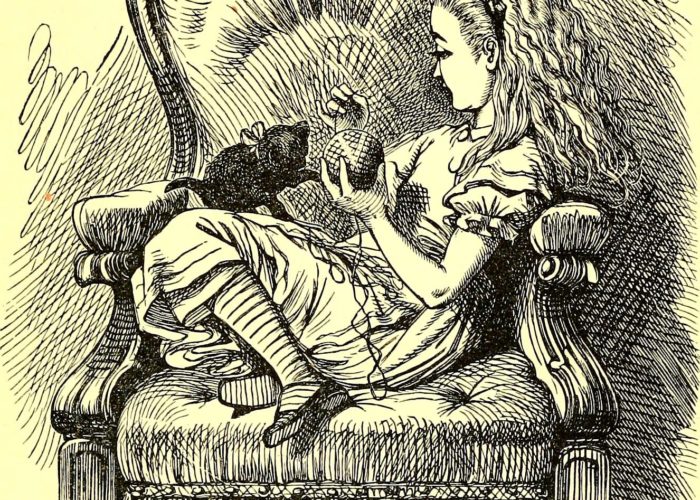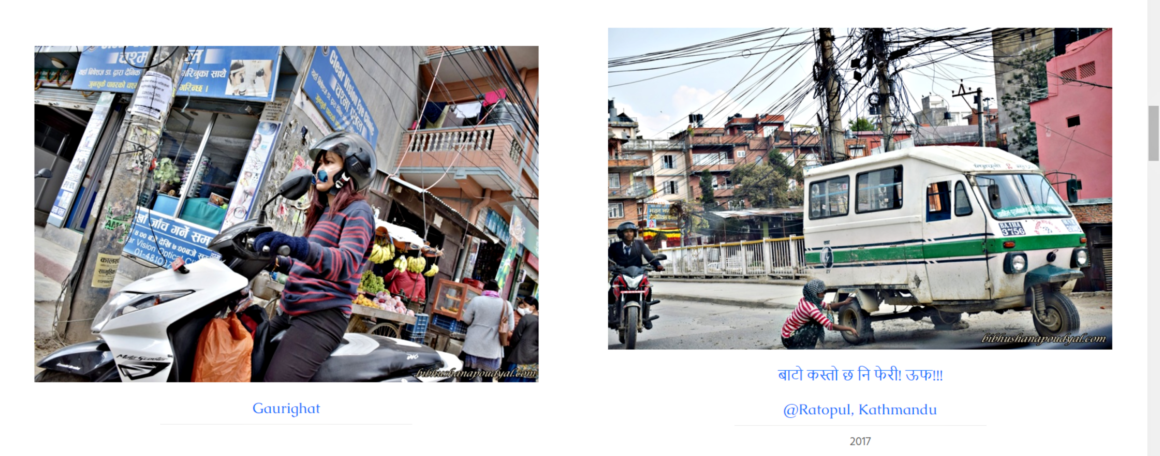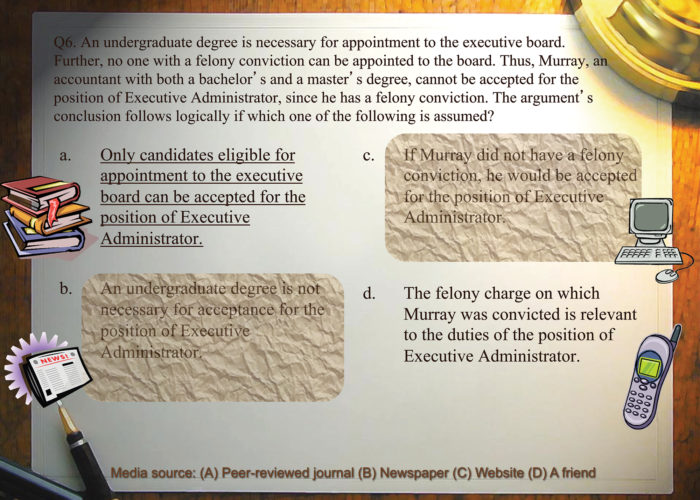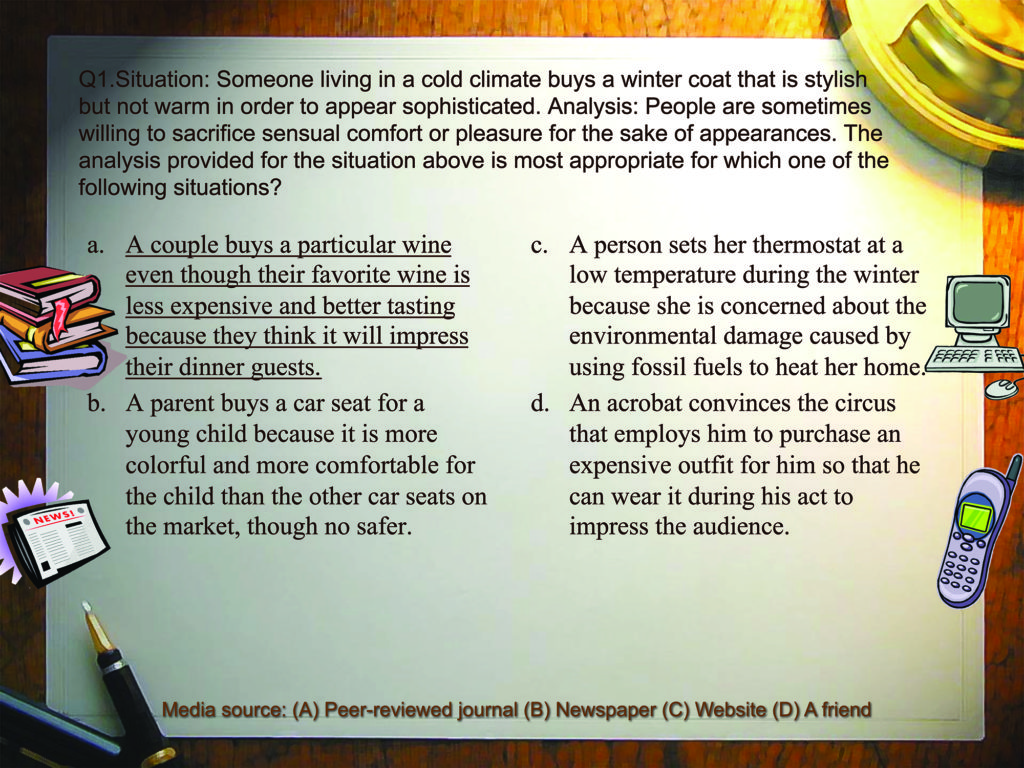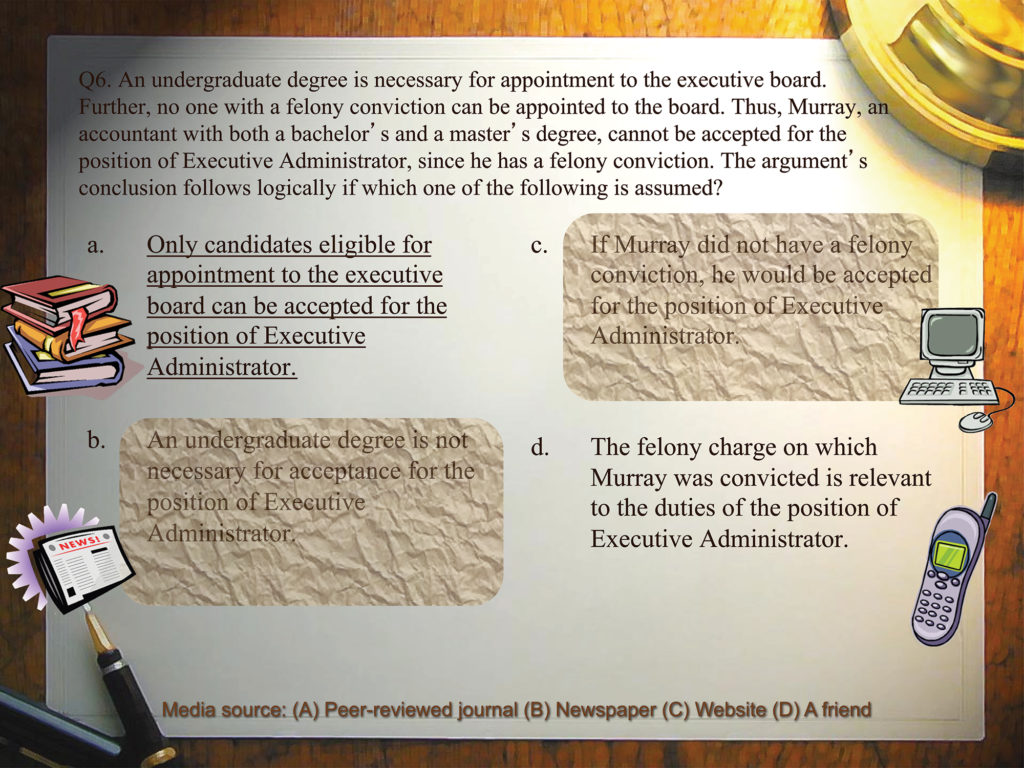Bibhushana
I want to start with a particular incident to introduce and contextualize myself and my project, though this was not the only or the most significant thing to trigger my interests in my current work. It happened during my first semester in graduate school, in my second month of living in the U.S. I was waiting for the campus shuttle to get back to my apartment. A guy came up to me and started talking. After some casual exchanges, he asked,
“Where are you from?”
“Nepal,” I said.
“Where is that?” He asked.
I felt like he had to know Nepal without any further references. Then, I remembered that there are countries I don’t know about, too. Because “no one” talks about them. [The question here is also who is/are “no one?”].
And so I said, “It’s in South Asia.”
“You mean the Philippines?” He asked.
“Isn’t that a different country? Maybe you should try to Google Nepal,” I told him.
At this point, I just wanted to be done with this conversation.
“Yeah, you are right. I will,” he said.
I smiled and turned my head to the street, continuing to wait for the bus. Then, something even more dreadful occurred to me. I considered what Google might say about Nepal, aside from providing some tourist guide kind of thing. Earthquakes? Floods? The Chhaupadi system? Discrimination against women? Some local rituals? And so on. Well, all of these statements are true. But is that all that’s true about Nepal? What about the other multiple narratives that are easily overshadowed by the dominant and much disseminated, algorithmic, exotic, and damaging narrative of Nepal? Don’t I, you, she, he, they, it, we, that, this also exist? I feared that this man from the bus stop might Google Nepal and start feeling sorry for me in a way I would never feel for myself.
I hastily turned towards the stranger and said, “Actually, I don’t recommend you Googling. Google doesn’t tell you much about the places you don’t know and want to know more about.” I knew he wouldn’t Google anyway. Perhaps he did not even remember my country’s name anymore. But from then on, I knew that I would never again say, “why don’t you Google Nepal?” to a stranger.
I always knew there is something “wrong” with Google. Consider, for example, Safiya Umoja Noble’s (2018) Algorithms of Oppression, where she discusses the multiple ways in which digital algorithms oppress non-Western communities and communities of color. The representation of Nepali culture in digital spaces started becoming a major concern for me after I moved to the U.S. I felt like postcolonialism and its debates (which I had studied in Nepal) started making much more sense after my move to a “new” or “foreign” country. In the U.S., people frequently conclude things about me based on my skin color and the way I speak English in an “un-English” way. Why would—or what makes—someone conclude things about me in an absolute manner before even knowing me? These questions and experiences, among many others, triggered my curiosity in and decision to make interventions in digital archiving. Specifically, I decided to create a digital archive of street photography in Kathmandu, Nepal (non-West) from the physical location of the U.S. (West). The purpose of this archive is to illustrate the many artistic expressions and ways of being that may not traditionally or inherently be used to describe my culture and my country in current digital spaces.
Through some preliminary research, I found some digital representations of Nepal that may be considered archives, even if they are not formally identified as such (see De Kosnik’s (2016) discussion of “metaphorical instances of ‘archives’ in the digital age”). What I found is that most of these digital representations of Nepal are created and maintained by non-Nepalis, most of whom are situated in Western contexts. For example, the Digital Archeology Foundation was founded after the 2015 earthquake in Nepal to collect data “for research, heritage preservation, heritage appreciation, reconstruction planning, educational programs and 3D replication to aid in rebuilding and restoration work.” Data collected through this site is “sent to the IDA in Oxford for referencing and preservation.” The site is privately funded by David Ways through his travel-guide project The Longest Way Home. Another example, Archive-IT, hosts an archive of the “2015 Nepal Earthquake.” The purpose of the archive is to host “a collection of web resources related to the April 25th, 2015 earthquake and its after effects in Nepal. Contributors to this collection include Columbia University Library, Yale University Library, and the Bodleian Library,” none of whom are identified as being from Nepal.
Academic representations of Nepal in online spaces also portray essentializing notions of Nepali culture. For example, many U.S. Universities established websites of their South Asian Studies departments (see for example: https://www.southasia.upenn.edu/, http://southasia.rutgers.edu/, https://www.brown.edu/academics/south-asia/, and http://piirs.princeton.edu/sas). While much of the information on these sites is useful, all of these sites include photographs depicting Nepali culture (or South Asian cultures) as subjects of inquiry, with images of traditional Nepali religious rituals and ceremonies countering images of classroom discussion and intellectual engagement used to depict U.S. students in U.S. classrooms. In short, contemporary digital representations of Nepal remain largely what Said (1978) describes as a “great collective appropriation of one country by another,” leaving much room to expand and (re)build Nepali online identities (84).
Laura
During my graduate program at a large, public, Predominantly White Institution (PWI) in the Midwest, I had the opportunity to participate in and lead a few Digital Humanities projects. As a South American, White-presenting Latina immigrant in the U.S., it was my dream to apply my training in Digital Humanities in a context that would directly benefit (and stem from) minoritized communities. I dreamt of designing digital platforms that were not only designed “for” minoritized communities, but that were also co-designed with communities for our communities’ specific expertise, desires, and ideas. After graduating and coming to work at a university in the Southwest with an 80% Latinx student population, and in a graduate program that has the privilege of hosting a large international student population, predominantly from Southeast Asia, Africa, and Mexico, I was immediately motivated to start working with our brilliant students to not only critique the current normalized Western-dominant state of technology innovation in and beyond Digital Humanities, but to also build, along with students and communities, tools, technologies, and platforms that were designed by and for non-Western, non–English-dominant audiences.
It was in this context that I met Bibhushana, a brilliant PhD student who has interest and experience in Digital Humanities and who also entered our PhD program with extensive experience in critical theory (one of my favorite first memories of Bibhushana is from one of the first days I had her in class, when she told a story and casually mentioned that a year back she was “having lunch with Spivak and discussing critical theory”). In short, Bibhushana, like many of our international students pursuing graduate education in the U.S., has extensive training, experiences, and ideas that can and should inform U.S.-based institutions and disciplines and their orientations to Digital Humanities research. Yet, even in my short time at an institution that hosts a much more diverse student population than where I had my own graduate training, I note drastic discrepancies in how this innovative digital building work is supported when it stems from “non-traditional” students—students who are positioned by the institution to need “traditional” training in canonical disciplinary texts and practices (Sanchez-Martin et al. 2019). The flexibility, trust, and material support for innovative DH work is something that needs to be fostered and grown in the context in which Bibhushana and I met, and, we imagine, in other contexts hosting historically minoritized student populations.
As researchers with interdisciplinary research interests and from significantly different backgrounds, we are working to establish ethical protocols for building digital archives that are culturally sustaining rather than representative, and that intentionally avoid cultural essentialism. The stories and perspectives that we share in this dialogue illustrate some of the ways in which we are aiming to practice this type of ethical protocol both in the development of an archive and by reflecting on our participatory, community-driven methods. Drawing on Jacqueline Jones Royster and Gesa E Kirsch’s (2012) notion of strategic contemplation, we write this piece in the style of a dialogue to search for, reflect upon, and make visible the ways in which feminist rhetorical practices and relationships influence this critical digital archiving project and Critical Digital Humanities projects more broadly. According to Royster and Kirsch (2012), strategic contemplation “allows scholars to observe and notice, to listen to and hear voices often neglected or silenced, and to notice more overtly their own responses to what they are seeing, reading, reflecting on, and encountering during their research processes” (86). In this way, using strategic contemplation through our dialogue structure helps us both reflect on and illustrate the importance of embracing a critical awareness during decision-making processes in DH work.
Bibhushana
October 5, 2017
Dear Dr. Gonzales,
I am Bibhushana, RWS doctoral candidate, 1st semester …. I just wanted to ask you ‘are you into DH?’ I was just searching for someone in UTEP to talk about it. It’s my newly found curiosity about which I don’t know much. Right after [attending a] DH seminar in Nepal, I was curious (and excited) to know about UTEP’s approach to ‘rhetoric and technology’. Only couple of days back, I got to know that you will be teaching the class. I am very much looking forward to be in your class next semester.
Sincerely,
Bibhu
From the time I got into my PhD program in the U.S., I started searching for people who are working or willing to work in DH. For me, it was difficult to even imagine having to spend my doctoral years without being engaged in conversation with DH scholarship, theories, and praxis. I am not implying that every researcher should do DH work, but I do think that every university space should have some established DH infrastructures. My email to Dr. Gonzales was driven by my desire to work in DH after learning about this field during my last two months in Nepal. During this time, I participated in a #DHNepal2017 Summer Institute led by Professor Scott Kleinman, director of the Center for Digital Humanities at California State University at Northridge. During this workshop, I became interested in creating DH projects through postcolonial and feminist lenses that connect to my own disciplinary background in critical theory. However, I also realized that in order to create such projects, I would need to be connected to other DH scholars and have access to DH infrastructures and resources after the conclusion of the workshop. Professor Arun Gupto, director of the Institute of Advanced Communication Education and Research (IACER) in Nepal, where the #DHNepal2017 workshop was hosted, insisted that despite our lack of formal DH infrastructures in Nepal, we should keep trying to establish DH projects and programs in collaboration with other scholars. Having more opportunities to engage with DH projects would allow students and scholars to establish a broader network and audience for the critical humanities work that is already taking place in Nepal and in South Asia more broadly. Thus, as I began my doctoral program in the U.S. with many questions, I continued seeking opportunities to bring together work in DH, literary theory, and critical cultural studies.
Laura
When I first received the email from Bibhu asking if I was “into” DH, I wasn’t sure how to respond. Sure, I had worked on DH projects myself, but did I really have the training and expertise to guide a graduate student into this field? What would this guidance require, and how should I prepare? And, perhaps more importantly, what resources could I really provide Bibhu, particularly given the fact that I was only in my second year as an Assistant Professor in my current institution, and that I hadn’t heard the term DH be used on our campus? I was excited that Bibhu had interests in DH and that she would be in my “Rhetoric and Technology” course the following semester. In that course, I try to incorporate opportunities for students to define for themselves what the terms “Rhetoric and Technology” might mean in their careers, finding ways to combine our course readings with their own projects and interests. Although the “Rhetoric and Technology” course that is incorporated into our PhD program in Rhetoric and Writing Studies does not always cover Digital Humanities scholarship, my hope was that Bibhu would continue to develop her interests in DH and find ways to make connections in our course content. So, on the first day of class, I asked Bibhu (along with all my students) to describe their interests, and I encouraged them to continue pursuing this work throughout our class. Bibhu mentioned she was interested in DH and was thinking about building a “non-representational Nepali digital archive.” I was immediately intrigued, and I suggested that she might look into building this type of archive as her final course project. Our first class took place on January 17, 2018.
Bibhushana
January 19, 2018
Hi Dr. Gonzales,
It’s Bibhushana.
I wanted to tell you that I liked … your idea [from class] about creating a database from South Asia. I talked to my professor Arun Gupto about it and he too liked the idea. We discussed about the ways I can use it in my other research projects as well. But the problem is I have absolutely no idea about creating a database. I am excited about this project because it is a kind of initiation towards working with technology the way I have never done before. Even if it’s very intimidating to start from the scratch, I am looking forward to it. So, I will be needing your guidance from the very first step. It would be wonderful if you could tell me how and where do I start. What should be my first step? I know it’s going to be very challenging and I might tire you with my questions too. 🙂
Regards,
Bibhu
Laura
Shortly after I received the message from Bibhu expressing her continued interest in building her digital archive (i.e., database), I decided to try to connect her with our university library resources to provide some background in the “technicalities” training that Bibhu mentions above. I know that Bibhu has extensive training in postcolonial and decolonial scholarship, and that she is incredibly qualified to build the archive she wants to build. However, I also recognize and understand her hesitance toward identifying as a “tech-savvy” DH scholar who can build an archive from scratch. Further, I recognize Gabriela Raquel Ríos’s important clarification that terms like “colonial” and “decolonial,” while now deployed frequently “in recent scholarship on the rise of new media and digital humanities,” should not be used metaphorically without considering “the relationship between colonization and indigeneity (broadly) that the trope evokes” (Cobos et al. 2018, 146). As Ríos explains in Cobos et al., (2018), “for scholars of indigenous rhetoric, the trope of colonization matters differently … than it might for other scholars, and it probably matters differently for students and faculty who are marked as indigenous or who identify as indigenous as well” (146). Thus, to say that we want to build Bibhu’s archive through anticolonial frameworks means that we have to have the resources, awareness, skills, and community commitments and connections to do so in ethical, participatory ways.
Although our immediate university resources at the time were not able to provide much training in programming and digital archive design, what Bibhu and I learned through our early conversations is that the core of developing this archive lies in the willingness to try something new, and in the understanding that despite what may be perceived as a “lack” of “tech-savvy” knowledge, students like Bibhushana have the critical and cultural knowledge and experiences to help digital archivists rethink their approaches to cultural (re)presentation in online spaces. What Bibhushana had, even in our early conversations, was a willingness to engage and experiment with various interfaces and to fail and try again when certain digital elements did not work as she as initially hoped. She also has a clear understanding and commitment to avoiding fetishization and false claims of representation in her work. Thus, as we began exploring platforms and resources, Bibhushana and I were able to also continue expanding our theoretical, practical, and disciplinary frameworks for approaching this archiving project.
Bibhushana and Laura Discuss Critical DH Methodologies
As we began the process of conceptualizing and collaborating on Bibhushana’s archive, we found it important to also read and write together about the specific epistemological groundings that this project would entail. For example, to work toward decolonizing knowledge production and representation in Digital Humanities research and pedagogy, we embraced a shift from Digital Humanities (DH) to Critical Digital Humanities (CDH). Arguing that the Digital Humanities, as evidenced in its “digital humanities associations, conferences, journals, and projects,” lacks cultural critique, Alan Liu (2012) writes,
While digital humanists develop tools, data, and metadata critically (e.g., debating the “ordered hierarchy of content objects” principle; disputing whether computation is best used for truth finding or, as Lisa Samuels and Jerome McGann put it, “deformance”; and so on), rarely do they extend their critique to the full register of society, economics, politics, or culture. (n.p.)
In building our archive, we want to remain mindful of the ongoing, continuous relationship between critiquing and building, embracing the value of strategic contemplation while also remaining grounded in the everyday tasks and skills that DH projects require. As Liu posits, to frame the beginning of our project, we wondered, “How [do] the digital humanities advance, channel, or resist today’s great postindustrial, neoliberal, corporate, and global flows of information-cum-capital?” and how do we build an archive that tells many stories, from multiple perspectives, without claiming to represent a perceivably homogenous country, culture, and community?
To work toward these aims, we looked to examples of existing critical digital archives and decolonial DH projects, including: Slave Voyages (Emory Center for Digital Scholarship), which maps the “dispersal of enslaved Africans across the Atlantic world”; Torn Apart/Separados, “a deep and radically new look at the territory and infrastructure of ICE’s financial regime in the USA” that seeks to peel “back layers of culpability behind the humanitarian crisis of 2018”; Mapping Inequality, which offers “an extraordinary view of the contours of wealth and racial inequality in Depression-era American cities and insights into discriminatory policies and practices that so profoundly shaped cities that we feel their legacy to this day”; and SAADA: South Asian American Digital Archive, which “digitally documents, preserves, and shares stories of South Asian Americans.” In addition to these post projects, we are inspired by feminist digital archives such as Rise Up!, a digital archive of “feminist activism in Canada from the 1970s to the 1990s”; and Digital Feminist Archives, which offers “a snapshot of feminist history in the 1960s and 1970s.” Together, these projects, along with others listed in a Women’s Studies online database of the University of Michigan Library, provide us with useful models and inspiration for developing a digital archive of Nepal street photography that is both feminist and decolonial in its orientation to and claims about cultural (re)presentation.
Bibhushana
Through my decision to build a digital archive in the U.S., I thread my own experiences of gender discrimination in Nepal with racial and gender relations in the U.S. Engaging with “questions at the intersections of theory and praxis as we consider how tools can be theorized, hacked, and used in service of decolonization,” (Risam and Cardenas 2015), my goal is to problematize “imperialist archives that establish Western tradition by collecting and preserving artifacts from othered traditions” (Cushman 2013, 118). As Miriam Posner (2016) argues, CDH (and, we argue, decolonial digital archiving specifically) is “not only about shifting the focus of projects so that they feature marginalized communities more prominently; it is about ripping apart and rebuilding the machinery of the archive and database so that it does not reproduce the logic that got us here in the first place.” This is no easy task.
As alluring the idea of building a digital archive might sound, it is even more challenging. Digital archiving is collaborative work, and this kind of project needs a team, which I was still in search of at my new institution. In addition, I had another conceptual dilemma. As Kurtz (2006) explains in his discussion of the relationship between postcolonialism and archiving, archiving “is a literal re-centering of material for the construction and contestation of knowledge, whereas postcolonialism often works toward a figurative decentering of that same material” (25). With digital archiving, this contradiction between postcolonialism and archiving takes another dimension. As challenging it is, my aim in this project is not (only) to build a digital archive, but to document the journey itself, acknowledging my own positionality in this process. It is important not only to talk about what should be done to decolonize digital archives, but also to document and tell the stories of what happens when one undertakes this journey. My confusion and lack of tech-savviness is not only my personal story, but it is also a story that reveals a lot about resources within and beyond academia and many other socio-cultural-economic ecologies, particularly those situated in non-Western contexts.
Currently, I am building a prototype of the digital archive, which can be found at http://cassacda.com/. I named the project Rethinking South Asia via Critical Digital Archiving: Political, Ethical, Philosophical, and Aesthetic Journeys to emphasize the necessity of studying and building digital archives through critical lenses that help me relentlessly dig out and exhibit the complexities involved in the performance of archiving. If the goal is to decolonize and depatriarchalize digital archives and/in DH, then the purpose of my digital archive is to demonstrate such complexities and to show that there is no way one can represent any phenomena, country, or culture in an ethical way.
In order to work toward building this archive through anticolonial and feminist frameworks, I designed my site with an emphasis on collaboratively selecting and showcasing visuals and metadata. My goal is to avoid any insinuation of a singular, homogeneous representation of my home country and its various communities. Based on feedback from an initial IRB-approved online usability study that I conducted with participants in Nepal, I plan to insert my audiences’ experiences of and responses to the photographs in my archive as metadata. In this way, I seek to tell multiple narratives through various layers of the archive, remaining only one of many authors and designers on this project. Currently, I include both Nepali and English in the archive, and hope to extend to include other languages through further usability testing and collaboration.
Rather than categorizing collections in the archive through conventional tropes of religion, rituals, and landscapes, I continuously change photographs on the landing page of the archive, all of which depict Nepali community members partaking in everyday tasks like strolling down the streets, making tea in roadside stalls, and riding motorcycles. Figure 2 is a screenshot of the recent landing page of the archive, where four images showcase community members engaging in everyday activities in the streets of Kathmandu, Nepal.
Through a feminist perspective, I also seek to counter conventional notions of Nepali women in my archive, specifically by showcasing images of women in their everyday lives perceivably defying traditional narratives and representations. Figures 3, 4, and 5, for example, portray women of various ages riding in cars and motorcycles, changing a flat tire, shopping, making tea, and going to school.
Images such as those portrayed in Figures 3, 4, and 5 are prevalent throughout my archive, and further illustrate the ways in which I seek to rebuild and reposition common portrayals of Nepal in online spaces. My goal is to shift my potential audiences’ and my own expectations and wishes to see Nepal portrayed in certain ways. One of the hardest dilemmas I face in building this archive is the challenge of both weaving and representing visual stories of Nepal through my images without narrowing or limiting representations in one way or another. To deal with that to a certain extent, the images on the landing page keep changing so that the archive does not stick to one (or my) way of de/re/presenting Nepal and Nepalis. As I continue uploading thousands of images, my so-called authorship will be challenged in a subtle and necessary way as I continue building the archive through feedback from various audiences.
Despite my attempts to unpack and decenter a singular perspective of culture, there is always a problem with the concept of representation, particularly in archiving. Archiving is always situated. There is always what Mignolo (2003) defines as a “locus of enunciation” (5). The locus of enunciation, according to Mignolo (2002), references “the geopolitics of knowledge and the colonial difference” in the push for representation, which is never neutral (61). My goal through this project thus is to demonstrate that locus of enunciation and problematize the assurance of representation through depictions that may be deemed unconventional or unusual or that counter established assumptions about a specific group of people.
Currently, the archive hosts several photography collections that illustrate the streets of Kathmandu like those presented in Figures 2, 3, 4, and 5. My overarching definition of critical digital archiving is on the landing page of the archive, stating from the beginning that the purpose of the site is not to represent, but rather to present possibilities to question the whole idea of representation via archiving of my own street photography. On the archive’s About page, I offer guiding questions and exigencies for the project, which include the goal of “building a depatriarchal-decolonial digital archive … in a non-representational manner.”
After conducting a landscape analysis of free and open-source CMS blogging platforms (like Squarespace, WordPress, Wix, Weebly, Drupal) and noting and comparing the affordances and constraints of these platforms, I decided to build the archive using Omeka. Omeka is a “web publishing platform and a content management system (CMS), developed by the Center for History and New Media (CHNM) at George Mason University,” that was “developed specifically for scholarly content, with particular emphasis on digital collections and exhibits” (Bushong and King 2013). Because Omeka is a CMS designed for projects like my archive, I did not have to worry about my “lack” of coding literacy to start building an archive of Nepali street photography. At the same time, however, Omeka does not have abundant online tutorials available. So, it took a long time to figure out how to create items, collections, and exhibitions in this platform and to change themes and insert plugins. Further, working on this project in an institution that does not have formal infrastructures to support digital research emerging from the humanities made it more difficult and isolating to undergo the process of learning Omeka’s features and possibilities. Besides extensive metadata space (with the Dublin Core element set of fifteen metadata sets), Omeka has plugins like Neatline that allow users to weave narratives with maps and timelines and interact with different elements within the archive. My goal after setting up this initial prototype is to continue working with plugins like Neatline as I also continue having conversations and collaborating with various stakeholders who can contribute to the dynamic nature of this project.
Laura
In addition to setting up the initial infrastructure, we are also in the process of conducting participatory design and usability studies with several stakeholders who may be interested and invested in the project. As I agreed to continue working with Bibhu on this project as her dissertation advisor, I also made the decision to leave my current institution in the upcoming year. Together, Bibhu and I realized that we needed to find more resources if we were really going to have the time and space to devote to this project cross-institutionally during Bibhu’s time as a PhD student. Thus, as Bibhu was setting up the infrastructure of her project, I started seeking grant opportunities that could help us expand on her work. It was at this point that I found a grant opportunity that allowed us to work with a team of designer and user-experience researchers to develop future plans for this project. Most importantly, this grant will allow Bibhu and I to travel to Nepal in the summer of 2019 to conduct design, usability, and user experience testing with community members in Kathmandu, Nepal, allowing us to incorporate critical perspectives from Nepali communities as we continue building this project from the U.S. Through a participatory research framework (Rose and Cardinal 2018; Simmons and Grabill 2007), user testing in Nepal will allow us to get on-the-ground perspectives from Nepali communities about the things that they value in online representations of their home country. Furthermore, conducting in-person usability tests and participatory interviews with participants in Nepal will allow us to establish a team and a network for updating and maintaining future iterations of the archive.
Bibhushana
During our trip to Nepal, we will share prototypes of the archive with Nepali students, professors, and community members, as well as with other (non-Nepali) individuals who want to know more about Nepal. We are hoping that these user tests will help us make careful and responsible decisions regarding photographs and the nature of metadata. In a previous stage of the project, I conducted an online usability study that asked participants in Nepal to visit my archive and answer questions regarding the structure and usability of the site in its current stage. Questions included in this study helped me make decisions about the header text and landing page of the archive, where participants commented that the archive allowed audiences to see “the unnoticeable everyday life of local people in Nepal.” The full list of survey questions can be accessed here.
Although the online survey allowed me to gain some insights into Nepali community members’ perceptions of my archive, I was only able to get 16 responses to my study, despite my many efforts to disseminate my online survey through various platforms. This limited response echoes discrepancies in digital access that are common in communities in my home country who may not feel comfortable sharing their perspectives through online mediums that have historically fetishized and misrepresented non-Western contexts. For this reason, visiting Nepal in person to share the archive and conduct further testing will allow us to gain more responses that can continue shaping the direction of this project.
Through further in-person usability tests, we also hope to see if and how the digital archive is producing and/or reproducing traditional (i.e., colonial) representations of Nepali practices, and if/how the archive encourages further imagining of the multiple narratives embodied in places and people across cultures. Although we may not have all the necessary material and physical resources to consult with at our current institution, by increasing the visibility of this project in its prototype stages, and by working with participants in Nepal to continue designing and testing the archive, we hope to build and connect with networks of DH scholars beyond our local context who have experience designing archives and who may be interested in contributing to the development of this project. As this will be my first trip back to Nepal since coming to study in the U.S., I hope that this will be an opportunity to share my work with scholars and researchers in Nepal who are working in the area of Nepali Studies and South Asian Studies, continuing to develop frameworks for participatory, cross-institutional DH research.
Conclusion
Fostering the space to innovate digital archiving practices is a collaborative effort that requires individual researchers and institutions to move beyond binaries and disciplinary boundaries, engaging in a paradigmatic shift necessary to decolonize knowledge and its production and dissemination. As Jamie “Skye” Bianco (2012) explains, “This is not a moment to abdicate the political, social, cultural, and philosophical, but rather one for an open discussion of their inclusion in the ethology and methods of the digital humanities” (102). As Bianco (2012) continues, “we [in the Digital Humanities] are not required to choose between the philosophical, critical, cultural, and computational; we are required to integrate and to experiment,” particularly through ethical frameworks that value and centralize community knowledge (101).
Our project engages in rigorous conversations and questions that have been central to the work of the humanities, particularly in relation to cultural criticism, capitalism, and digital making. Critical digital archiving, and the process of engaging in CDH work more broadly, does not provide any static formula to decolonize or depatriarchalize digital archives, and neither do we. Instead, developing ethical protocols for creating DH projects, at least as we document in this article, requires researchers and student-teacher teams to explore multiple methods that purposely work against fetishization and essentialism through collaboration and participatory research.
By presenting a dialogue and preliminary plan for creating an anticolonial digital archive of Nepali street photography, we hope to engage in further conversations about the non-hierarchical interdisciplinary methodologies, inquiries, concerns, theories, and praxes that can be incorporated into CDH research. Through our collective conversations, we hope to further illustrate how issues of access, innovation, and cultural training intersect in the design and dissemination of contemporary digital archives and archiving practices, and how collaboration and participatory research, which have always been at the heart of DH, can also be critical components of building CDH infrastructures in perceivably “non-traditional” spaces. We hope that other teacher-researcher DH teams can thus learn from and build on our stories.

